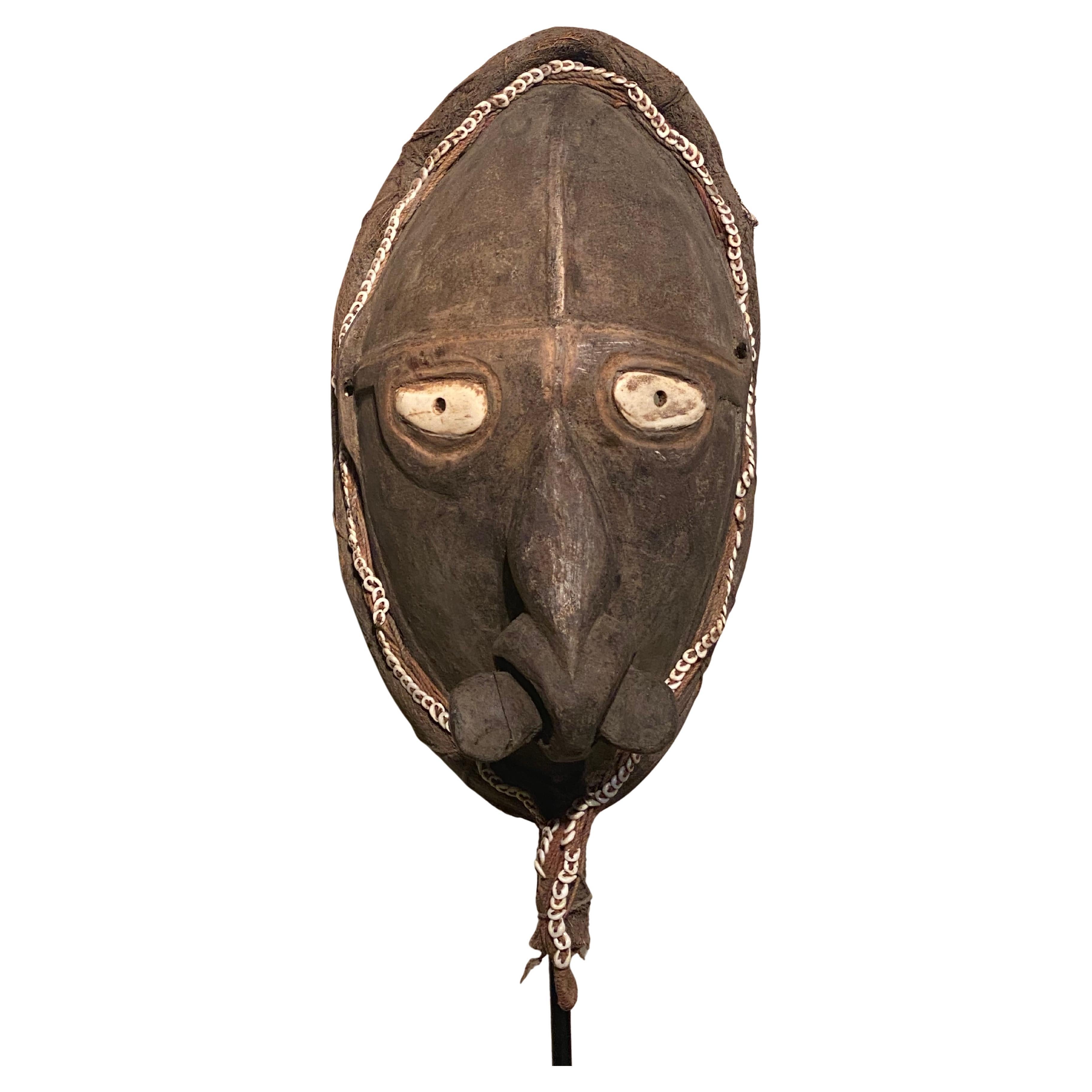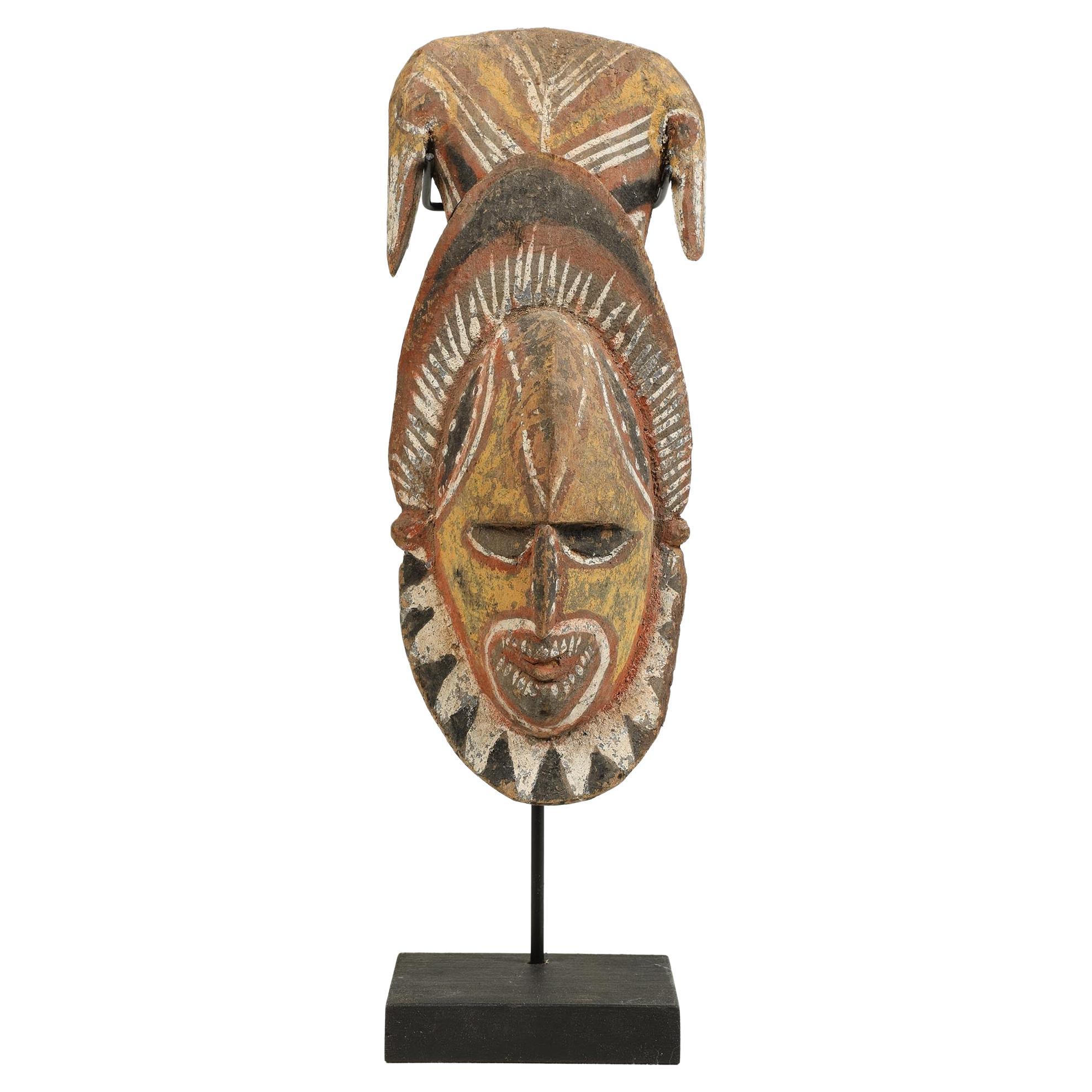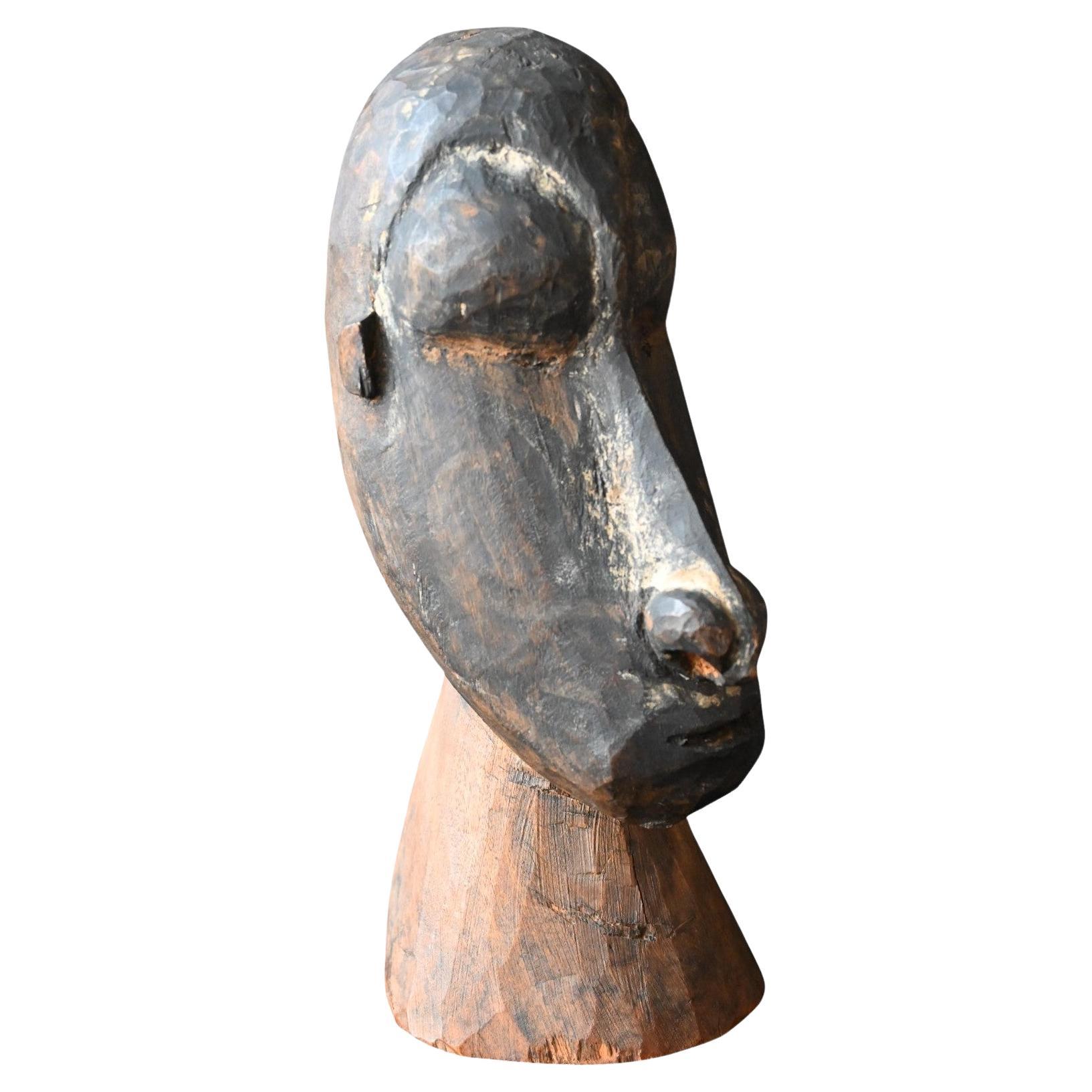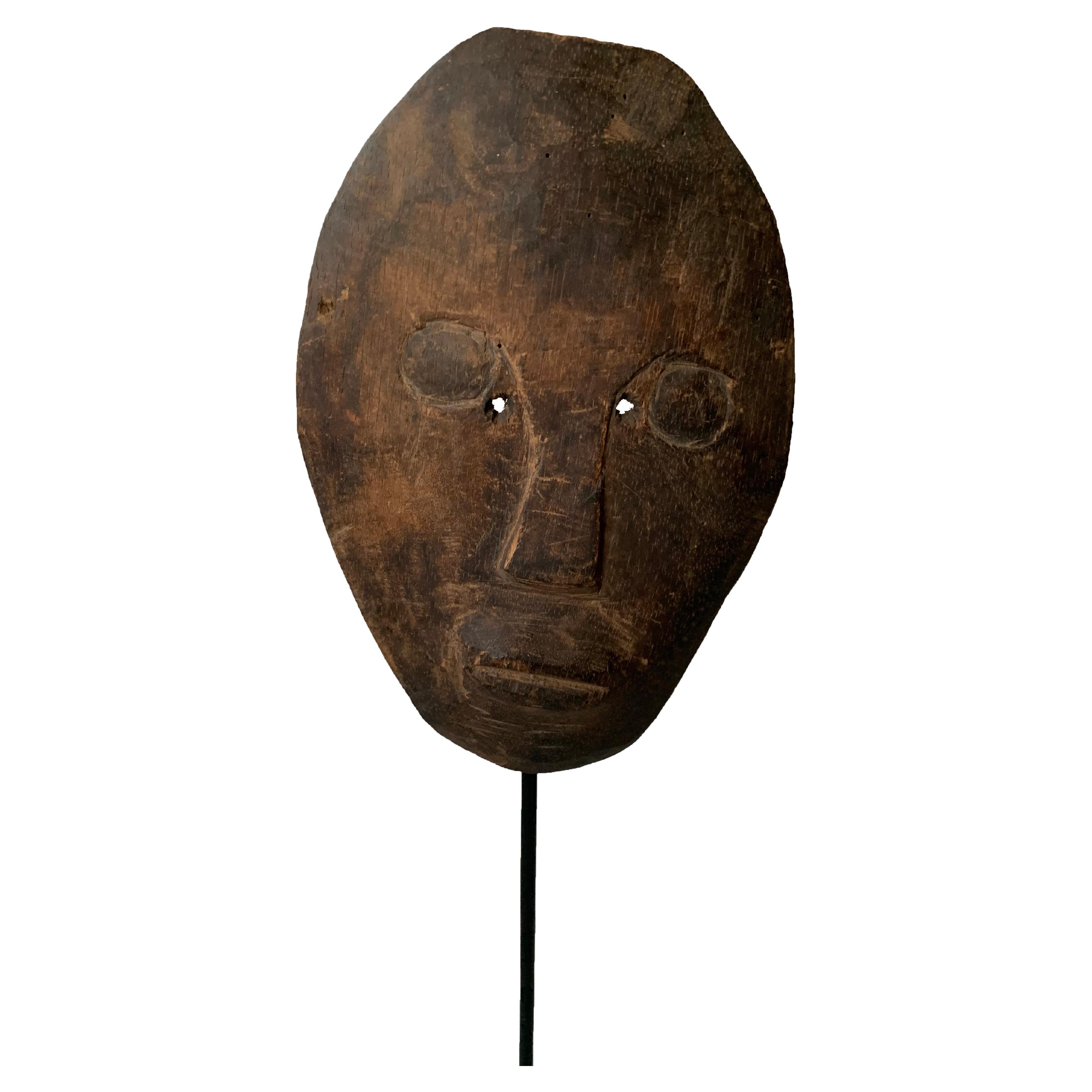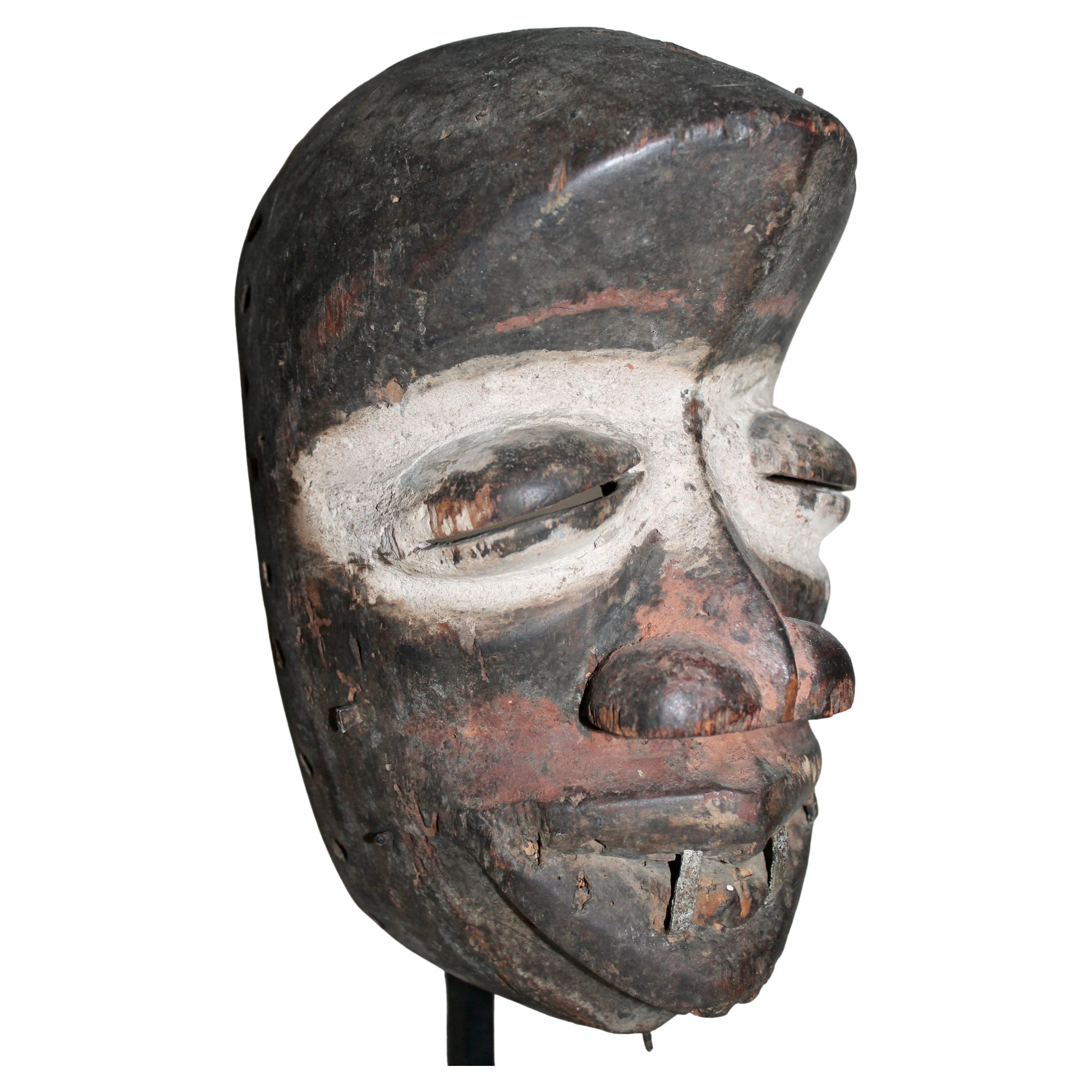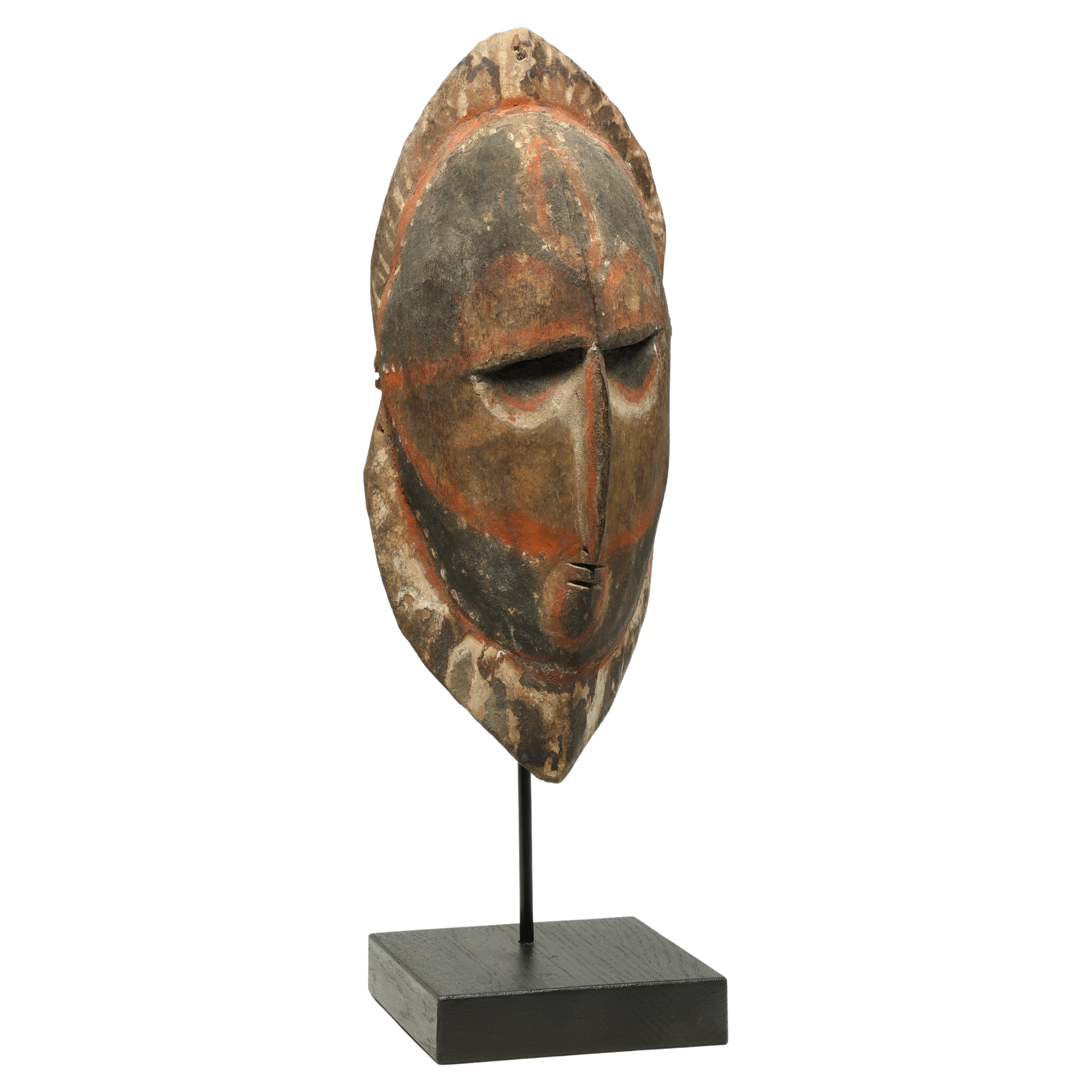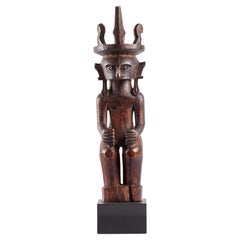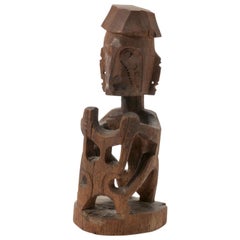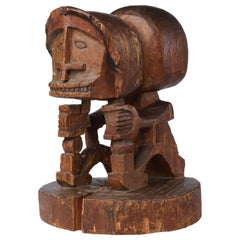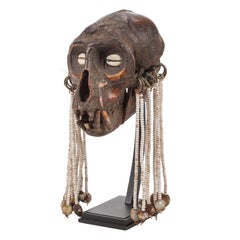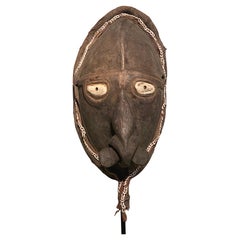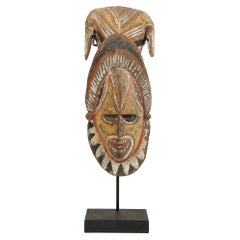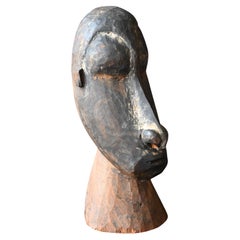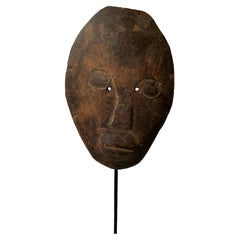Items Similar to An ancient Papua wooden substitute headhunters's head
Want more images or videos?
Request additional images or videos from the seller
1 of 11
An ancient Papua wooden substitute headhunters's head
$13,623.95
£10,085.84
€11,400
CA$18,852.14
A$20,780.88
CHF 10,873.55
MX$254,974.94
NOK 136,876.41
SEK 128,001.09
DKK 86,799.54
About the Item
Papua New Guinea, 18th-19th century
L. 22.5 x W. 18 cm (approx.)
Provenance:
Collected by Schulze-Westrum
Collection Rinck Hollnberger, Munich (purchased in the 1980s or 1990s)
For a comparable skull see the collection of the Metropolitan Museum of Art in New York.
The heads of humans and of animals such as crocodiles and pigs formerly played integral roles in the ceremonial life of Papuan Gulf peoples, who considered the heads to be vessels of life-giving supernatural power. Within men’s ceremonial houses, human skulls were displayed, together with sacred images such as spirit boards or gope, by the members of each clan in a specially constructed clan shrine. However, not all heads required the death of an enemy. In some areas, heads made from wood or other materials appear to have had powers equal to actual ones. In contrast to skulls, the facial features of wood heads were sometimes depicted as they appeared in life.
This example comes from the Wapo Creek area, where wood heads appear to have been used interchangeably with actual skulls. When headhunting was abolished by Australian colonial authorities in the early 1900s, Wapo Creek peoples were encouraged to substitute animal skulls. However, they refused, preferring instead to use wood heads like this one.
- Dimensions:Height: 7.09 in (18 cm)Width: 7.09 in (18 cm)Depth: 8.86 in (22.5 cm)
- Materials and Techniques:
- Place of Origin:
- Period:
- Date of Manufacture:19th century or earlier
- Condition:Wear consistent with age and use.
- Seller Location:Amsterdam, NL
- Reference Number:1stDibs: LU5458242044352
About the Seller
5.0
Recognized Seller
These prestigious sellers are industry leaders and represent the highest echelon for item quality and design.
Established in 1985
1stDibs seller since 2020
23 sales on 1stDibs
Typical response time: 5 hours
- ShippingRetrieving quote...Shipping from: Amsterdam, Netherlands
- Return Policy
Authenticity Guarantee
In the unlikely event there’s an issue with an item’s authenticity, contact us within 1 year for a full refund. DetailsMoney-Back Guarantee
If your item is not as described, is damaged in transit, or does not arrive, contact us within 7 days for a full refund. Details24-Hour Cancellation
You have a 24-hour grace period in which to reconsider your purchase, with no questions asked.Vetted Professional Sellers
Our world-class sellers must adhere to strict standards for service and quality, maintaining the integrity of our listings.Price-Match Guarantee
If you find that a seller listed the same item for a lower price elsewhere, we’ll match it.Trusted Global Delivery
Our best-in-class carrier network provides specialized shipping options worldwide, including custom delivery.More From This Seller
View AllA Nias 'Adu Zatua' wooden ancestor sculpture
Located in Amsterdam, NL
Indonesia, Nias, 19th century
H. 37.5 x W. 10 cm
Sculptures like the one present are not only decorative items but are believed to be vessels that house the spirits of ancestors and are used to communicate with them.
After the death of a person a wooden image or Adu Zatua was made to mediate between the human world and the spiritual realm. These kinds of figures were commissioned by noble Nias families, whereas simple and lesser quality carvings generally were found among lower class families.
In this particularly fine example, the sculptor has paid careful attention to the proportions of the different parts of the body, dividing it into three main sections – the head, the torso, and the legs. The shapes are sometimes flat, round, or have notches, but all are perfectly in balance creating a certain divine tranquillity. This Adua Zatua’s ears are decorated with earrings, and it is wearing a headdress, pointing towards a chiefly provenance.
In 1914 the Dutch gained complete control of the island of Nias and started spreading Protestant Christianity. Many ancestor statues...
Category
Antique 19th Century Indonesian Tribal Art
Materials
Wood
Early Papua Korwar Statue, Collection of Missionary Starrenburg, Collected 1909
Located in Amsterdam, NL
A Papua wood figure of a Korwar
North West Irian Jaya, Vogelkop area, coastal Geelvink Bay, present-day Cenderawasih Bay, early 20th century
The seated Korwar is holding an ope...
Category
Early 20th Century Indonesian Tribal Tribal Art
Materials
Wood
Early Papua Korwar Ancestor Figure, Early 19th Century, Deep Black-Brown Patina
Located in Amsterdam, NL
An extremely rare Papua wood sculpture of a Korwar
Papua New Guinea, Cendrawasih Bay, Wandammen, early 19th century
Measures: Height 24 x Diameter 18 cm
Finely carved in th...
Category
Antique Early 19th Century Indonesian Tribal Tribal Art
Materials
Wood
$113,532
Free Shipping
A pair of monkey skull amulets
Located in Amsterdam, NL
Probably Papua New Guinea, or Borneo, Dayak, late 19th/early 20th century
H. approx. 12 cm (incl. stand, each)
Provenance:
Private collection, Flanders
Category
Antique Late 19th Century Papua New Guinean Tribal Art
Materials
Shell, Beads
A Sepik 'panggal' sago spathe or tree bark painting of an ancestral figure
Located in Amsterdam, NL
East-Sepik Province, Keram River, early 20th century
The painting in non-binded pigment on sago spathe, bark of a sago palm, depicts an ancestral figure surrounded by a saw fish...
Category
Early 20th Century Papua New Guinean Tribal Art
Materials
Wood
A rare Papua 'Gope' Spirit board from the Schulze Westrum collection
Located in Amsterdam, NL
A rare Papua 'Gope' Spirit board from the Schulze Westrum collection
New Guinea, Papua Gulf, probably Urama people, late 19th–early 20th century
Attached to the back are several 'b...
Category
Antique Late 19th Century Papua New Guinean Tribal Art
Materials
Wood
You May Also Like
Tribal Wooden mask from Papua New Guinea
Located in Schellebelle, BE
A tribal Wooden mask from Papua New Guinea, Sepik region,
good patina and wear of the mask,
the mask is decorated with small shells and shell parts,
powerful object
Category
Vintage 1970s Asian Tribal Art
Materials
Hardwood
Early Papua New Guinea Painted Maprik Wood Head or Mask, Strong Expression
Located in Point Richmond, CA
From Papua New Guinea an early painted Maprik carved wood head sculpture or mask, intense expression showing teeth, and two opposing stylize...
Category
Mid-20th Century Papua New Guinean Tribal Tribal Art
Materials
Organic Material, Wood
Sepik River (Keram Region), Papua New Guinea Ancestral Bust, mid 20th century
Located in Bilzen, BE
Sepik River (Keram River tributary), Papua New Guinea
Ancestral Bust (Male Ancestor Figure)
Wood, with age cracks and dark matte patina
Height: 24 cm, base diameter 10.5 cm
Period: M...
Category
Mid-20th Century Papua New Guinean Tribal Tribal Art
Materials
Wood
Early 20th Century Hand-Carved Wood Tribal Mask from Atoni Tribe Timor
Located in Jimbaran, Bali
This very flat mask originates from the Atoni people of Timor, featuring two very small eye holes. For the Timorese people masks portray both male and female ancestors, worn by warri...
Category
Early 20th Century Indonesian Other Masks
Materials
Wood
Important Dan N'gere Mask, Pace Primitive Provenance
By Dan People
Located in Sharon, CT
Superb mask with typically strong features and kaolin around the eyes. Advertised by Pace Primitive in Arts D'Afrique Noire 74. Ex. collection Al Ross (1911-20...
Category
Antique Late 19th Century Liberian Primitive Tribal Art
Materials
Wood
Early Papua New Guinea Painted Maprik Wood Mask Curves Old Pigments
Located in Point Richmond, CA
Early Papua New Guinea painted Maprik carved hard wood mask. Mid-20th century, with wonderful curved expressive asymmetrical face. Long nose with pierced septum. Faded polychrome pig...
Category
Mid-20th Century Papua New Guinean Tribal Tribal Art
Materials
Organic Material, Wood
$2,360 Sale Price
20% Off
